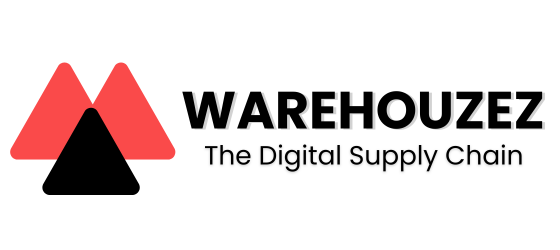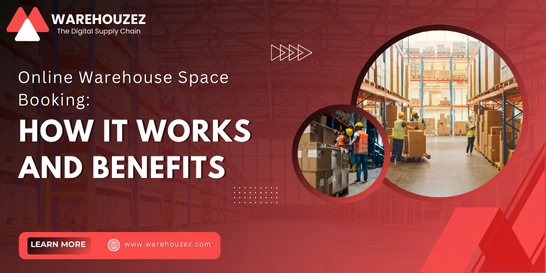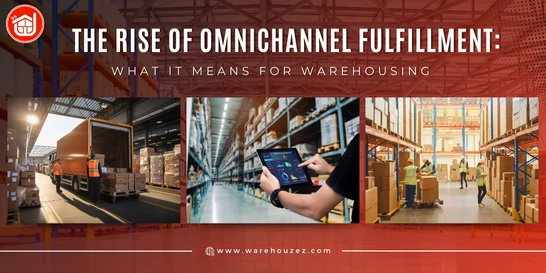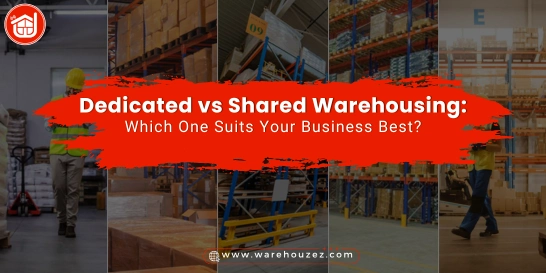The Future of Supply Chain Management: Innovations and Trends in 2025
The Future of Supply Chain Management: Innovations and Trends in 2025
The supply chain industry is on the verge of a major transformation. The year 2025 will mark the beginning of a new era of efficiency and transparency. As consumer expectations evolve and global trade expands, the supply chain system is set to experience substantial changes. In 2025, adoption of breakthrough technologies will be a key focus. Artificial intelligence (AI), blockchain, and the Internet of Things (IoT) will further enhance accuracy, flexibility, and speed. Alongside these advancements, emerging trends like sustainability and risk management will reshape how companies approach their logistics operations.
In this blog post, we will explore the expected supply chain challenges followed by the latest trends that will define supply chain management in 2025. So, let's get started!
Common Supply Chain Challenges and Disruptions
It's not secret that change always brings its own set of challenges. Let's take a look at some of the obstacles that supply chain companies might face in the years to come.
Shifts in Consumer Demand -
Consumer expectations are continuously evolving. Their preferences are leaning toward faster and more flexible delivery options. In 2025 and beyond, supply chains will need to be more adaptable and responsive to meet consumer and market demands.
Labor Shortages -
Labor shortages have already been a pressing issue in recent years, particularly in warehousing and distribution. By 2025, automation and robotics may alleviate some of this strain, but the human element will still be crucial, especially for roles that require problem-solving.
Climate Change and Environmental Pressures -
Extreme weather conditions and environmental regulations are pressuring companies to adopt sustainable practices. From sourcing materials responsibly to minimizing emissions in transportation, climate-related challenges will require significant adjustments across the supply chain. This drive toward sustainability will be both a challenge and a key area for innovation.
Regulatory and Trade Changes -
With geopolitical tensions and changing trade agreements, supply chains are constantly impacted by new tariffs, regulations, and compliance requirements. Navigating this complex environment will be essential to avoiding costly delays or penalties.
Supply Chain Technologies and Trends in 2025
In 2025, technology will certainly be the cornerstone of supply chain management. Let's take a look at the major trends that are set to revolutionize the SCM industry:
Artificial Intelligence (AI) and Machine Learning (ML) -
AI and ML are absolute game-changers, transforming how supply chains operate by making processes more efficient. Through data analysis, these technologies can predict demand and optimize inventory levels. For example, AI can help warehouses arrange stock based on demand forecasts, reducing storage costs and preventing stockouts. Machine learning algorithms can also improve predictive maintenance, reducing unexpected equipment downtime and optimizing the supply chain’s flow.
Blockchain for Enhanced Transparency -
Blockchain technology offers a secure, decentralized ledger that can track goods at every stage of the supply chain. This transparency enables greater trust among stakeholders, as they can verify product origins, monitor handling, and ensure regulatory compliance. In industries like food and beverages and pharmaceuticals, blockchain can prevent fraud and improve quality assurance by tracking every detail, from raw material sourcing to final delivery.
Cloud Computing for Seamless Collaboration -
Cloud computing enables SCM partners to collaborate in real-time, regardless of their location. By centralizing data, cloud platforms improve information flow across suppliers, manufacturers, and distributors. This allows for quick decision-making and enhances flexibility in managing unexpected disruptions.
Implementation of IoT for Real-Time Tracking -
The Internet of Things (IoT) enables devices and sensors to collect and share data, providing visibility into the value chain. IoT devices can track goods in transit, monitor storage conditions, and even detect potential hazards. For instance, a sensor in a refrigerated truck can alert managers if the temperature goes above safe levels. This will help prevent spoilage and ensure product quality.
Autonomous Vehicles and Drones for Faster Delivery -
Autonomous vehicles, delivery robots, and drones are gradually entering mainstream logistics operations. They promise faster yet more cost-effective last-mile deliveries. While there are regulatory hurdles to overcome, these technologies could play a significant role in reducing delivery times, especially in hard-to-reach areas.
Digitization for Improved Efficiency -
Digitizing supply chain processes improves efficiency by reducing paperwork, human error, and delays. By shifting to digital platforms, companies can automate inventory management, order processing, and customer service. Digitization is expected to improve response times and customer satisfaction. This makes it an important trend for companies looking to stay competitive.
Sustainability Initiatives -
Sustainability has moved beyond being a buzzword; it’s now a necessity for businesses in 2025 and beyond. Companies are investing in eco-friendly packaging, optimizing routes to reduce emissions, and using renewable energy in their warehouses. Consumers are clearly favoring companies with strong sustainability commitments. Thus, green supply chains are not only environmentally responsible but also a business requirement.
On-Demand Warehousing -
On-demand warehousing allows companies to access warehouse space on an as-needed, flexible basis. They can scale their storage capabilities up or down as needed. This trend is extremely beneficial for e-commerce businesses, which experience seasonal fluctuations. With on-demand warehousing services, companies can reduce costs and improve operational efficiency. This flexi-warehousing model also enables businesses to adapt to changes in demand without being tied down to long-term contracts.
Growth of Third-Party Logistics (3PL) -
As supply chains become more complex, many companies are turning to 3PL service providers for support. In 2025, we can expect continued rapid growth in the 3PL market. These providers offer specialized services that enable businesses to focus on their core operations. 3PL companies take care of everything from warehousing to transportation. They are undoubtedly the most valuable partners for organizations seeking expertise and flexibility.
Rationalizing the Supply Chain Base -
In an effort to build more resilient supply chains, many companies are rationalizing their supplier base by working with fewer yet more reliable partners. This consolidation reduces risk, improves supplier relationships, and enables better quality control. Companies are also diversifying their sourcing to avoid over-reliance on any single region, which could be disrupted by trade or climate-related events.
Bottom Line
The future of supply chain management in 2025 is better and brighter. It is filled with groundbreaking innovations to address age-old challenges. Supply chain companies will need to navigate shifts in consumer demands, climate concerns, and regulatory landscapes. But the adoption of advanced technologies promises a more efficient, resilient, and transparent supply chain. Companies that embrace these trends—investing in AI, blockchain, IoT, and sustainability—will not only meet the demands of the modern market but also thrive in an increasingly complex and interconnected world.



